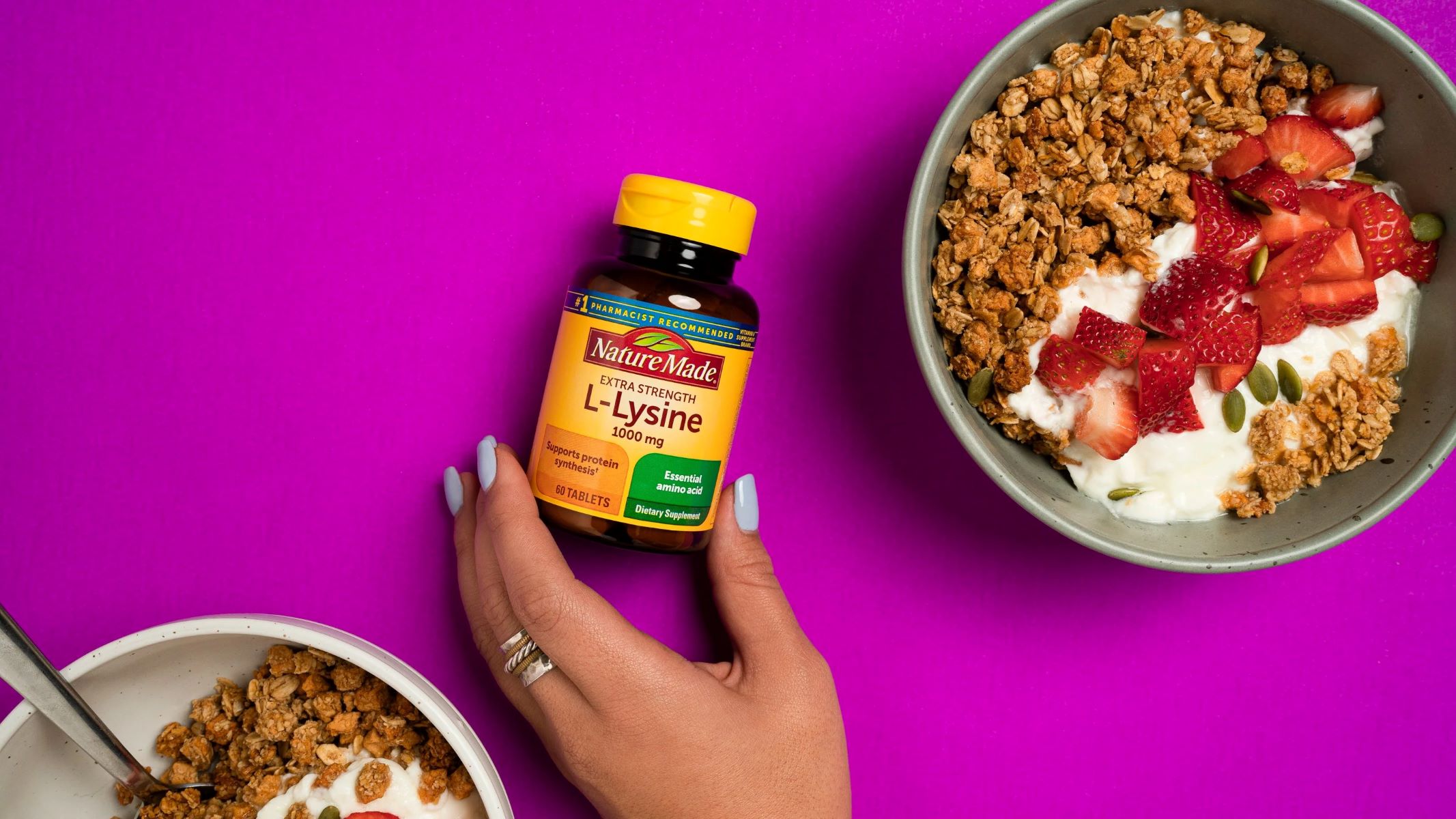

Featured
How To Exercise To Increase Stamina
Modified: August 21, 2023
Looking for ways to increase your stamina? Check out our featured article on how to exercise effectively to boost your endurance and push your limits!
Introduction
Welcome to the world of fitness! If you are looking to increase your stamina and improve your overall fitness level, you’ve come to the right place. Stamina is the ability of your body to sustain prolonged physical activity, and it plays a crucial role in various aspects of your life, from sports performance to daily tasks.
In this article, we will explore the importance of stamina, the benefits it offers, and the strategies you can adopt to enhance it through exercise. Whether you are a beginner or someone who has been on a fitness journey for a while, this article will provide you with valuable insights and practical tips to boost your stamina to new heights.
Before we delve into the details, it’s important to understand that building stamina is a gradual process that requires consistency, dedication, and patience. It’s not something that can be achieved overnight, but with the right approach and mindset, you can make significant progress over time.
So, if you’re ready to take your fitness game to the next level and experience the countless benefits of having increased stamina, let’s dive in!
The Importance of Stamina
Stamina is a key component of physical fitness and has numerous benefits for our overall well-being. Whether you’re an athlete, a fitness enthusiast, or simply someone looking to improve your endurance, developing good stamina is essential. Here are a few reasons why stamina is important:
- Enhanced Performance: Having good stamina allows you to perform at your best for longer periods of time. Whether you’re participating in sports, working out at the gym, or engaging in daily activities, increased stamina enables you to sustain your energy levels and perform more efficiently.
- Increased Endurance: Stamina directly correlates with endurance. When you have high stamina, you can engage in physical activities for longer durations without feeling fatigued or out of breath. This can help you take part in longer workouts, engage in intense exercises, and push through challenging situations with ease.
- Improved Cardiovascular Health: Regular exercise aimed at increasing stamina has significant cardiovascular benefits. It strengthens your heart, increases blood circulation, improves lung function, and lowers the risk of developing cardiovascular diseases.
- Weight Management: Building stamina involves engaging in physical activities that burn calories. By incorporating exercises that improve stamina into your routine, you can effectively manage your weight and body composition. This helps in maintaining a healthy body weight and reducing the risk of obesity-related health issues.
- Enhanced Mental Resilience: Stamina is not just about physical endurance; it also has a positive impact on mental well-being. Regular exercise and the resulting increase in stamina can reduce stress, improve mood, boost self-confidence, and enhance overall mental resilience.
Having understood the importance of stamina, it’s clear that building and improving it should be a priority in our fitness journey. The next sections will guide you through the steps to achieve this goal, helping you unleash your true athletic potential and live a healthier, more energetic life.
Setting Realistic Goals
Setting realistic goals is a fundamental step towards building stamina. It’s important to have clear, achievable objectives that you can work towards. Here are some tips for setting realistic goals:
- Be Specific: Clearly define what you want to achieve. Instead of a generic goal like “improve stamina,” specify a measurable target such as “run an extra mile without stopping” or “complete a 60-minute cardio workout.”
- Consider Your Current Fitness Level: Assess your current stamina level realistically. Set goals that are challenging but attainable based on your starting point. Pushing yourself too hard too soon may lead to injury or demotivation.
- Break It Down: Divide your main goal into smaller milestones. Create a series of achievable targets that gradually build up to your ultimate goal. This helps track progress and provides a sense of accomplishment along the way.
- Set a Timeline: Give yourself a reasonable timeframe to work towards your goals. This helps create a sense of urgency and provides structure to your training program. However, be flexible and allow for adjustments as needed.
- Consider Personal Circumstances: Take into account your lifestyle, commitments, and any potential limitations. Be realistic and tailor your goals accordingly. It’s better to set smaller, attainable goals that you can consistently work towards rather than setting unrealistic ones that may lead to frustration.
- Track and Evaluate: Keep a record of your progress and periodically assess your performance. This allows you to make adjustments, celebrate achievements, and stay motivated on your journey towards improved stamina.
Remember, the key is to set goals that challenge you but are within your reach. By setting realistic targets, you’ll be more likely to stay motivated, see progress, and ultimately achieve greater stamina levels.
Choosing the Right Exercises
When it comes to building stamina, selecting the right exercises is crucial. Here are some factors to consider when choosing the best workouts to improve your stamina:
- Aerobic Exercises: Aerobic exercises are the foundation of increasing stamina. Activities such as running, cycling, swimming, and brisk walking help improve cardiovascular fitness and endurance. These exercises engage large muscle groups, increase oxygen intake, and boost overall stamina levels.
- Interval Training: Incorporating high-intensity interval training (HIIT) into your routine is an effective way to build stamina. Alternating between bursts of intense activity and short recovery periods challenges your body, improves endurance, and elevates your aerobic capacity.
- Resistance Training: Don’t neglect strength training when aiming to increase stamina. Building muscle strength and endurance through resistance exercises like weightlifting or bodyweight exercises helps improve overall performance and stamina levels.
- Cross-training: Engaging in a variety of exercises is not only beneficial for avoiding boredom but also for developing well-rounded stamina. Include activities like yoga, Pilates, or other recreational sports to engage different muscle groups and challenge your body in new ways.
- Progressive Overload: Gradually increase the intensity, duration, and frequency of your workouts to continually challenge your body. This concept of progressive overload helps stimulate adaptation and allows your stamina to improve over time.
- Consider Personal Preferences: Choose exercises that you enjoy and are more likely to stick to in the long run. This increases adherence and motivation, making it easier to incorporate them into your regular routine.
Remember, it’s essential to consult with a healthcare professional or fitness expert before starting any new exercise program, especially if you have existing health conditions or concerns. They can provide personalized guidance and tailor a workout plan that suits your individual needs and goals.
Warm-up and Cool-down
Before diving into your stamina-building exercises, it’s crucial to prioritize warm-up and cool-down routines. These pre and post-workout rituals help prepare your body for exercise and aid in recovery. Here’s why they are important:
- Warm-up: A proper warm-up is essential to gradually increase your heart rate, loosen up your muscles, and prepare your body for the upcoming workout. It helps improve circulation, flexibility, and range of motion, reducing the risk of injuries. A warm-up can include dynamic stretches, light cardio exercises, and movements that target the major muscle groups you’ll be using during your workout.
- Cool-down: Just as warming up is important, so is cooling down. Cooling down after exercise helps gradually lower your heart rate and return your body to a resting state. It allows your muscles to relax, reduces post-workout muscle soreness, and aids in recovery. Incorporate static stretches and gentle movements in your cool-down routine to promote flexibility and prevent muscle tightness.
- Proper Technique: Warm-up and cool-down routines also provide an opportunity to focus on your form and technique. By taking the time to set a solid foundation at the beginning and end of your workout, you can ensure proper movement patterns, maximize the effectiveness of your exercises, and prevent injuries caused by poor form.
- Psychological Preparation: Warm-ups and cool-downs offer a mental transition into and out of your workout. They help you shift your focus to the present moment, mentally prepare for the upcoming physical demands, and provide a sense of closure and satisfaction after completing your exercise session.
Make sure to allocate sufficient time for warm-up and cool-down in your workout routine. Aim for at least 5-10 minutes for each phase to reap the maximum benefits. Customize your warm-up and cool-down activities based on the specific exercises you’ll be performing and your individual needs.
Remember, skipping warm-up and cool-down routines is not worth the risk. Prioritize your body’s preparation and recovery to optimize your stamina-building exercises and maintain healthy training habits.
Building a Routine
Building a consistent exercise routine is essential for improving stamina. By establishing a regular schedule, you create a foundation for progress and ensure that stamina-building exercises become a part of your lifestyle. Here are some tips to help you build an effective routine:
- Set a Schedule: Determine the days and times that work best for you to dedicate to your workouts. Consistency is key, so choose a routine that is realistic and fits seamlessly into your daily life.
- Start Slowly: If you’re new to exercise or restarting after a break, ease into your routine. Begin with shorter workouts and gradually increase the duration and intensity over time. This approach helps prevent burnout and reduces the risk of injury.
- Include Rest Days: Rest days are just as important as exercise days. They allow your body to recover and adapt to the demands of your workouts. Aim for at least one or two rest days each week to prevent overexertion and promote optimal performance.
- Plan a Variety of Workouts: Incorporate different types of exercises into your routine to target various muscle groups and prevent monotony. This not only keeps your workouts interesting but also ensures comprehensive fitness development.
- Keep a Workout Journal: Track your workouts, including exercises, sets, repetitions, and the duration of each session. This helps you monitor progress, identify areas for improvement, and stay motivated by seeing how far you’ve come.
- Stay Accountable: Find an exercise buddy or join a fitness group to help you stay accountable and motivated. Having someone to share your journey with can make the process more enjoyable and encourage you to stick to your routine.
Remember, building a routine is about finding what works for you and aligning it with your goals and lifestyle. It may take some trial and error to figure out the most suitable schedule, but with persistence and commitment, you can establish a routine that supports your stamina-building efforts.
Progressive Overload
Progressive overload is a fundamental principle in building stamina and improving overall fitness. It involves gradually increasing the demands placed on your body during exercise to stimulate adaptation and continual progress. Here’s how you can incorporate progressive overload into your stamina-building routine:
- Gradually Increase Intensity: Start with exercises that challenge your current stamina level but are still manageable. As you get stronger and more comfortable, gradually increase the intensity of your workouts by adding more resistance, increasing the speed, or extending the duration of your exercises.
- Progress to Longer Durations: Initially, you may focus on shorter bursts of exercise. Over time, aim to extend the duration of your workouts. For aerobic exercises like running or cycling, gradually increase the time spent on each session to push your stamina limits.
- Add Sets and Repetitions: In resistance training, progressively overload your muscles by adding additional sets or repetitions to your exercises. This approach helps build endurance and strength in the targeted muscle groups.
- Vary the Intensity of Interval Training: If you engage in interval training, progressively increase the intensity of the high-intensity intervals or reduce the duration of the recovery periods. This challenges your cardiovascular system and pushes your body to adapt to higher intensities.
- Monitor and Adjust: Keep track of your progress to ensure that you’re continually challenging yourself. If an exercise or routine becomes too easy, it may indicate the need to increase the intensity or explore new exercises that provide a greater challenge.
- Listen to Your Body: While progressive overload is essential, it’s crucial to listen to your body’s cues and avoid overdoing it. Pushing yourself too hard or progressing too quickly may lead to injury or burnout. Always prioritize proper form and technique, and take rest days when needed.
Remember, progressive overload is a gradual process that requires patience and consistency. By progressively challenging your body over time, you can steadily improve your stamina and achieve long-term, sustainable results.
Incorporating Interval Training
Interval training is a powerful tool for improving stamina and boosting cardiovascular fitness. It involves alternating between high-intensity exercises and periods of active recovery. Incorporating interval training into your routine can help you push your limits, increase your aerobic capacity, and enhance your overall endurance. Here’s how you can incorporate interval training effectively:
- Choose Your Intervals: Determine the duration and intensity of your high-intensity intervals. Start with shorter intervals of higher intensity, and gradually increase both the duration and intensity over time as your body adapts.
- Select Exercises: Choose exercises that challenge your cardiovascular system and engage large muscle groups. Running, cycling, jumping jacks, burpees, or rowing are excellent choices for interval training.
- Warm-up and Cool-down: Begin each interval training session with a proper warm-up to prepare your body for the intense exercises that lie ahead. Similarly, end the session with a cool-down to gradually lower your heart rate and aid in recovery.
- Interval Variation: There are several ways to structure your intervals. You can opt for a traditional approach of alternating between periods of high-intensity exercise and active recovery, or you can explore other methods such as Tabata or pyramid intervals. Experiment with different interval lengths and ratios to keep your workouts challenging and exciting.
- Listen to Your Body: Pay attention to your body’s signals during interval training. It’s normal to feel a significant increase in heart rate and fatigue, but listen to any discomfort or pain that may indicate the need to adjust the intensity or take a short break.
- Progress Over Time: As your stamina improves, gradually increase the intensity or duration of your intervals. This progressive overload stimulates further adaptation and helps you continue to push your limits.
- Mix It Up: Incorporate interval training into your regular routine by scheduling dedicated sessions or integrating intervals into your existing workouts. You can alternate between interval-focused workouts and steady-state cardio exercises to maintain a well-rounded approach to stamina-building.
Remember, interval training is challenging, so it’s important to listen to your body and adjust the intensity to suit your fitness level. Consult with a fitness professional to ensure proper form and technique, especially when performing high-impact exercises or if you have any underlying health concerns.
Cross-training for Stamina
Cross-training involves incorporating a variety of exercises and activities into your fitness routine. It offers numerous benefits for improving stamina, preventing boredom, and avoiding overuse injuries. Here’s why cross-training is important for enhancing your overall endurance:
- Muscle Balance and Conditioning: Cross-training allows you to engage different muscle groups and prevent muscle imbalances. By diversifying your activities, you can strengthen and condition a wider range of muscles, improving overall stamina and performance.
- Mental Stimulation and Motivation: Trying different exercises and activities keeps your workouts exciting and mentally stimulating. It prevents monotony, boosts motivation, and helps you stay committed to your fitness routine.
- Injury Prevention: Focusing on a single activity can put repetitive stress on certain muscles and joints, increasing the risk of overuse injuries. Cross-training reduces this risk by distributing the impact and stress across different activities, allowing your body to recover and adapt in a more balanced way.
- Improved Conditioning: Cross-training provides opportunities to work on different aspects of fitness, such as strength, endurance, flexibility, and coordination. By incorporating a variety of exercises, you can improve overall conditioning, leading to enhanced stamina and athletic performance.
- Full-Body Fitness: Some activities, like swimming or rowing, engage numerous muscle groups simultaneously, resulting in a more comprehensive workout. By cross-training, you can achieve a well-rounded level of fitness, targeting different areas of your body and improving overall stamina.
- Varying Intensity and Impact: Cross-training allows you to mix high-impact activities with low-impact ones, providing rest and recovery periods for certain muscle groups while still improving cardiovascular fitness. This variation in intensity and impact helps prevent overexertion and allows for more consistent training.
When incorporating cross-training into your routine, consider incorporating activities such as swimming, cycling, yoga, Pilates, hiking, or dance classes. Experiment with various exercises and find what you enjoy most while challenging your body in different ways.
Remember to listen to your body, gradually increase the intensity of new activities, and consult with a fitness professional for guidance, especially if you’re new to certain exercises or have any underlying health concerns.
Rest and Recovery
Rest and recovery are essential components of any effective stamina-building program. They allow your body to repair, rebuild, and adapt, leading to improved performance and reduced risk of injuries. Here’s why rest and recovery are crucial for enhancing stamina:
- Muscle Repair and Growth: During exercise, your muscles experience microscopic damage. Rest days provide an opportunity for these muscles to repair and grow stronger. Without sufficient recovery, your muscles may not have enough time to fully heal, leading to overuse injuries and hindered progress.
- Replenishment of Energy Stores: Exercise depletes your body’s energy stores, including glucose and glycogen. Rest days allow these stores to replenish, ensuring that you have enough energy for your next workout. Adequate rest also supports optimal hormone balance and immune function.
- Prevention of Overtraining: Overtraining can lead to a state of persistent fatigue, decreased performance, mood disturbances, and increased risk of injuries. Incorporating rest days into your routine helps prevent overtraining by giving your body the necessary time to recover and adapt.
- Mental Relaxation: Rest days not only benefit your physical body but also your mental well-being. Taking breaks from intense workouts allows you to relax, recharge, and maintain a healthy balance between exercise and other aspects of your life.
- Active Recovery: On rest days, consider incorporating light activities such as gentle stretching, yoga, or low-impact exercises to promote blood flow, enhance flexibility, and aid in muscle recovery. These activities help prevent stiffness and promote a quicker recovery process.
- Individualize Your Rest: The amount of rest needed varies from person to person. Pay attention to your body’s signals and adjust your rest days accordingly. Factors such as age, fitness level, intensity of exercise, and overall stress levels can influence your recovery needs.
Remember, rest and recovery are as important as the actual workouts in your stamina-building journey. Embrace and prioritize rest days to allow your body to adapt, grow stronger, and perform at its peak.
Proper Nutrition for Stamina Building
Proper nutrition plays a vital role in building stamina and fueling your body for optimal performance. What you eat directly impacts your energy levels, endurance, and overall health. Consider the following guidelines to support your stamina-building goals:
- Balance of Macronutrients: Ensure your diet includes a balance of carbohydrates, proteins, and healthy fats. Carbohydrates provide the primary source of energy for your workouts, while protein supports muscle repair and growth. Healthy fats are essential for hormone production and overall well-being.
- Carbohydrates for Energy: Include complex carbohydrates like whole grains, fruits, and vegetables in your diet. These provide sustained energy, necessary for endurance exercises. Opt for minimally processed sources to maximize nutrient content.
- Protein for Muscle Repair: Consume an adequate amount of protein to support muscle repair and growth. Good sources include lean meats, poultry, fish, eggs, dairy products, legumes, and plant-based proteins like tofu or tempeh.
- Healthy Fats for Sustained Energy: Incorporate sources of healthy fats, such as avocado, nuts, seeds, and olive oil. These fats provide long-lasting energy, aid in nutrient absorption, and support heart health.
- Hydration: Proper hydration is crucial for maintaining stamina. Adequate water intake helps regulate body temperature, supports digestion, and prevents dehydration, which can negatively impact performance. Drink water before, during, and after your workouts, and listen to your body”s thirst cues throughout the day.
- Vitamins and Minerals: Consuming a variety of fruits, vegetables, and whole foods will provide essential vitamins and minerals needed for stamina-building. These nutrients help support energy production, immunity, and overall health.
- Timing of Meals: Eat balanced meals and snacks throughout the day to sustain energy levels. Consume a pre-workout meal with a combination of complex carbohydrates and lean protein to provide fuel for your workout. Post-workout, replenish your energy stores with a meal rich in carbohydrates and protein to facilitate muscle recovery.
- Individualize Your Nutrition: Everyone’s nutritional needs can differ based on factors such as age, gender, activity level, and body composition. Consider consulting with a registered dietitian or nutritionist to personalize your nutrition plan and ensure you’re meeting your specific needs.
Remember, proper nutrition is a crucial component of stamina building. Nourish your body with a well-balanced diet, hydrate adequately, and fuel yourself appropriately before and after workouts to optimize your stamina and performance.
Hydration and Stamina
Hydration is a critical factor in maintaining stamina and optimizing performance. Water is essential for numerous bodily functions and is particularly important during exercise. Here’s why staying hydrated is crucial for improving stamina:
- Optimal Energy Levels: Proper hydration supports optimal energy production. When you’re dehydrated, your body’s ability to convert nutrients into energy is compromised, leading to decreased stamina and performance.
- Regulation of Body Temperature: During exercise, your body temperature rises. Sweating is the body’s way of cooling down, but it can lead to fluid loss if not replenished. Sufficient hydration helps regulate body temperature, preventing overheating and reducing the stress on your body.
- Oxygen Transport: Water plays a crucial role in transporting oxygen and nutrients to your muscles. This oxygen delivery is essential for muscle function and overall stamina during physical activity.
- Improved Cardiovascular Function: Staying hydrated helps maintain healthy blood volume and circulation. This allows for efficient oxygen and nutrient delivery to your muscles, enhancing cardiovascular function and endurance.
- Prevention of Fatigue and Cramping: Dehydration can lead to fatigue, muscle weakness, and cramping. By staying properly hydrated, you can reduce the risk of these issues, allowing you to perform at your best and sustain your stamina for longer periods.
- Enhanced Recovery: Hydration plays a crucial role in post-workout recovery. It facilitates the removal of metabolic waste products and supports optimal muscle repair, facilitating faster recovery and improved stamina for subsequent workouts.
- Hydration Guidelines: Aim to drink water before, during, and after your workouts. The exact amount of water needed varies depending on factors such as intensity of exercise, duration, temperature, and individual sweat rates. As a general guideline, sip on water throughout the day to maintain hydration and listen to your body’s thirst signals.
- Sports Drinks for Intense Workouts: For longer, intense workouts exceeding 60 minutes, consider replenishing electrolytes through sports drinks. These drinks contain carbohydrates and electrolytes that help maintain hydration and provide energy during prolonged exercise sessions.
Remember to make hydration a priority in your daily life, not just during workouts. Develop healthy habits by carrying a water bottle with you, monitoring your water intake, and replenishing fluids promptly to support your stamina-building efforts.
Consistency and Motivation
Consistency and motivation are key factors in successfully building stamina. It’s important to stay committed to your goals and maintain a positive mindset throughout your fitness journey. Here are some strategies to help you stay consistent and motivated:
- Establish a Routine: Create a schedule that includes regular workout sessions and stick to it. Consistency is crucial for progress, as it allows your body to adapt and build stamina over time.
- Set Realistic Goals: Set specific, achievable goals that align with your fitness level and personal aspirations. Having clear objectives helps maintain focus and provides a sense of accomplishment as you achieve each milestone.
- Track Your Progress: Keep a record of your workouts, noting improvements, personal records, and benchmarks reached. Seeing your progress on paper or in an app can be highly motivating and help you stay committed to your stamina-building journey.
- Find an Accountability Partner: Partner with a friend, family member, or personal trainer who shares similar goals or can provide support and encouragement along the way. Being accountable to someone else enhances motivation and provides a sense of responsibility.
- Stay Positive: Celebrate small victories and focus on the positive changes you’re experiencing throughout your stamina-building journey. Recognize that progress takes time and effort, and embrace the process rather than being fixated on immediate results.
- Vary Your Workouts: Don’t be afraid to switch up your routine and try new exercises or activities. Adding variety keeps things interesting and prevents boredom, helping you stay motivated and engaged in your fitness journey.
- Seek Support: Join fitness communities, participate in group classes, or engage with online fitness platforms. Surrounding yourself with like-minded individuals who inspire and support you can significantly boost motivation and provide valuable insights.
- Reward Yourself: Set up a system of rewards for achieving specific goals. Treat yourself to something you enjoy, whether it’s a small indulgence or a well-deserved rest day. Rewarding yourself reinforces positive behavior and motivates you to keep pushing forward.
- Practice Self-Care: Prioritize self-care activities such as proper sleep, stress management, and relaxation techniques. Taking care of your overall well-being contributes to better motivation and allows your body to recover effectively.
Remember, building stamina is a journey that requires patience, consistency, and a positive mindset. By implementing these strategies, you can stay motivated, overcome challenges, and ultimately achieve your stamina-building goals.
Conclusion
Building stamina is a rewarding and worthwhile endeavor that can enhance your overall fitness and improve your quality of life. By incorporating the strategies outlined in this article, you can progressively increase your stamina, allowing you to sustain physical activity for longer durations and perform at your best.
Remember the key points discussed throughout this article:
- Stamina is important for enhanced performance, increased endurance, improved cardiovascular health, weight management, and mental resilience.
- Setting realistic goals and tracking your progress are essential for success.
- Choosing the right exercises, incorporating interval training and cross-training, and prioritizing proper warm-up and cool-down routines all contribute to improving stamina.
- Progressive overload, rest and recovery, and proper nutrition play vital roles in stamina building.
- Hydration, consistency, motivation, and self-care are crucial for maintaining progress and staying on track.
Remember, patience and consistency are key. Building stamina takes time and effort, but the benefits are well worth it. Stay motivated, celebrate your achievements along the way, and embrace the process as you work towards becoming a stronger, more enduring version of yourself.









